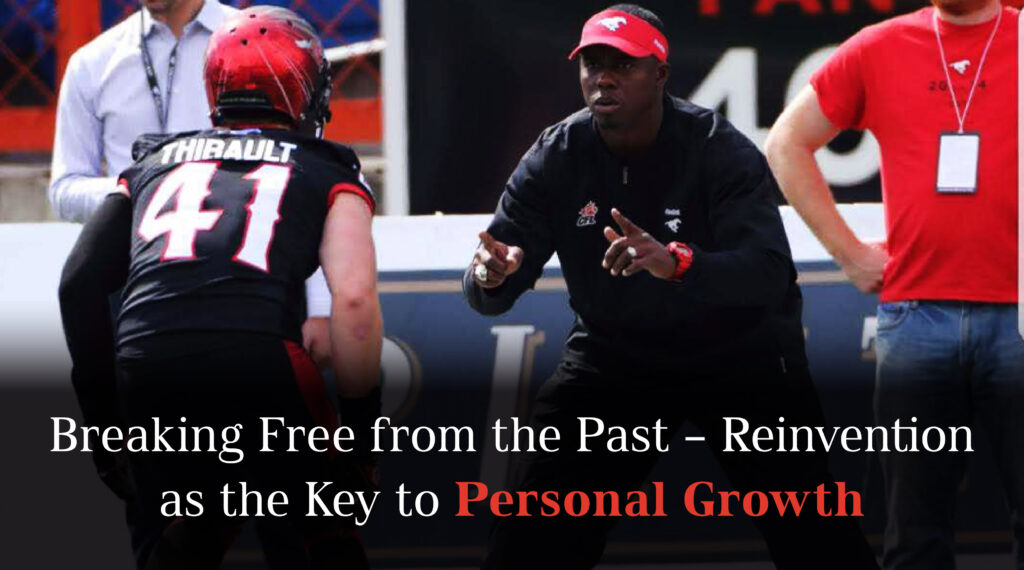Introduction
Success doesn’t happen by accident—it’s the result of deliberate effort, strategic foresight, and unwavering commitment. For athletes, coaches, and professionals across industries, planning is the backbone of achievement. Kahlil Carter, a seasoned football coach and former professional athlete, exemplifies this truth through his remarkable career and the principles outlined in his book, The iN Crowd: Life, Legacy, Leadership. With a coaching résumé that includes leading teams to back-to-back championships and mentoring 21 All-League players, Carter’s approach to goal-setting offers a masterclass in turning ambition into tangible results. This blog explores why planning and goal-setting are indispensable, drawing from Carter’s insights and experiences to illustrate their transformative power for athletes and professionals alike.
The Foundation of Success Lies in Planning
Kahlil Carter’s journey—from a standout player in the NFL, NFL Europe, Arena Football League (AFL), and Canadian Football League (CFL) to a celebrated coach—demonstrates that success is rarely spontaneous. In The iN Crowd, Carter introduces a structured three-year planning strategy, a method he advocates over traditional one-year or five-year plans. This approach, detailed in the “Game Plan!” section of his book, encourages individuals to break down their aspirations into actionable daily, weekly, and monthly goals, with reflection points at the end of each month and year. For Carter, this isn’t just a suggestion—it’s a proven framework that fueled his transition from the gridiron to the sidelines and beyond.
Planning provides clarity, a critical asset for athletes who face high-pressure environments where split-second decisions can define outcomes. As Carter writes, “In order to succeed in your plan, you must plan to succeed.” This resonates deeply in sports, where preparation separates champions from contenders. Whether it’s a quarterback studying film or a coach devising a game plan, the ability to anticipate and prepare is what drives performance. Beyond athletics, this principle applies to professionals in any field—executives mapping corporate strategies, educators designing curricula, or entrepreneurs launching ventures all rely on planning to align their efforts with their objectives.
Kahlil Carter’s Three-Year Blueprint – A Model for Progress
Carter’s three-year planning model is a standout feature of his philosophy, reflecting his belief in balancing short-term wins with long-term vision. Unlike a one-year plan, which can feel rushed, or a five-year plan, which may lack immediacy, Carter’s approach maximizes focus while allowing adaptability. He advises writing down five actionable goals daily or weekly, reflecting on them monthly, and assessing annual progress through a “Progress Report.” This methodical process ensures accountability and keeps individuals on track, a strategy Carter honed during his 12-year coaching career with teams like the Montreal Alouettes and Calgary Stampeders.
For athletes, this translates into a disciplined regimen. Consider a young football player aiming to earn a college scholarship. Under Carter’s guidance, their daily goals might include strength training, reviewing plays, and maintaining academic excellence—reflecting his SWAAG motto: Students Working toward Academic and Athletic Greatness. Monthly reflections allow them to adjust techniques or study habits, while yearly progress reports measure their growth toward that scholarship. Carter’s own success—breaking barriers as one of the first AF2 players to sign with the Buffalo Bills in 2003—underscores how this structured approach turns dreams into milestones.
Professionals outside sports can adopt this model with equal efficacy. A marketing manager, for instance, might set daily goals like drafting campaigns, weekly targets for team collaboration, and annual objectives for revenue growth. The iterative nature of Carter’s plan ensures continuous improvement, a cornerstone of sustained success.
Why Goal-Setting Drives Accountability and Motivation
One of the most compelling reasons goal-setting is essential is its ability to foster accountability. Kahlil Carter’s career exemplifies this: as a player, he earned All-League honors four times and was named Defensive Player of the Year in 2003, achievements rooted in his relentless pursuit of self-defined targets. As a coach, he held players accountable while showing them he cared—a balance praised by Gary Swenson, a veteran high school coach who worked with Carter. Swenson notes, “Kahlil will hold players accountable yet they know how much he cares for them,” highlighting how goal-setting, paired with personal investment, builds trust and drives performance.
Accountability keeps individuals honest about their progress. For athletes, this might mean tracking stats like interception totals—Carter finished his playing career with 50—or adhering to training schedules. In a corporate setting, it could involve meeting project deadlines or hitting sales quotas. By setting clear, measurable goals, individuals create a roadmap that demands follow-through, reducing the risk of complacency. Moreover, achieving these milestones fuels motivation. Each completed goal, no matter how small, reinforces belief in one’s capabilities, a cycle Carter leveraged to lead teams to five championship appearances, including CFL Finals in 2016 and 2017.
Adapting to Challenges Through Strategic Planning
Life, like football, is unpredictable. Injuries, setbacks, and external pressures can derail even the most talented individuals. Kahlil Carter’s story is one of resilience—overcoming gang-ridden streets, racism, and personal regrets to build a legacy of leadership. His planning philosophy emphasizes adaptability, a critical skill for navigating challenges. In The iN Crowd, he reflects on missed opportunities, like not entering the NFL draft after his rookie season, but uses these lessons to refine his approach. “One experience builds on another,” he writes, underscoring how planning allows for course correction.
For athletes, this adaptability is vital. An injury might force a player to shift from starter to mentor, requiring new goals focused on recovery or leadership. Carter’s transition from player to coach mirrors this, as he redefined his purpose after a groin injury derailed his NFL aspirations. Beyond sports, professionals face similar pivots—market shifts, technological disruptions, or personal life changes all demand flexible planning. Carter’s three-year framework, with its regular reflection points, equips individuals to reassess and realign, ensuring they remain proactive rather than reactive.
The Broader Impact – Building a Legacy Through Goals
Goal-setting isn’t just about personal gain; it’s about creating a lasting impact. Kahlil Carter’s mission extends beyond wins and losses—he’s committed to shaping lives. His SWAAG ethos—Serving a Wonderful and Amazing God and inspiring confidence—reflects a purpose-driven approach that transcends athletics. By mentoring 21 All-League players and earning accolades like the Arena Football League’s All-Anniversary Team nod in 2007, Carter has built a legacy rooted in intentional planning.
This ripple effect applies universally. Athletes who set goals to inspire teammates can elevate entire programs, much like Carter did with back-to-back championships in 2011 and 2012. Professionals who prioritize mentorship or innovation leave behind stronger organizations. Carter’s emphasis on relationships—“The game of football is about relationships,” he asserts—ties goal-setting to collective success, amplifying its significance. Whether on the field or in the boardroom, setting and pursuing goals with intention fosters a culture of excellence that benefits everyone involved.
Practical Steps to Implement Carter’s Planning Principles
To harness the power of planning, start with Carter’s actionable advice. First, define your vision—what does success look like in three years? For an athlete, it might be a professional contract; for a professional, a promotion or business launch. Next, break it into yearly objectives, then monthly and daily tasks. Use Carter’s five-goal daily structure to maintain focus—simple actions like “study game film” or “complete a report” build momentum. Reflect monthly to tweak your approach, and annually to celebrate progress and set new targets. Finally, integrate Carter’s SWAAG mindset: balance academics or professional skills with your passion, ground your efforts in faith or purpose, and carry yourself with confidence.


